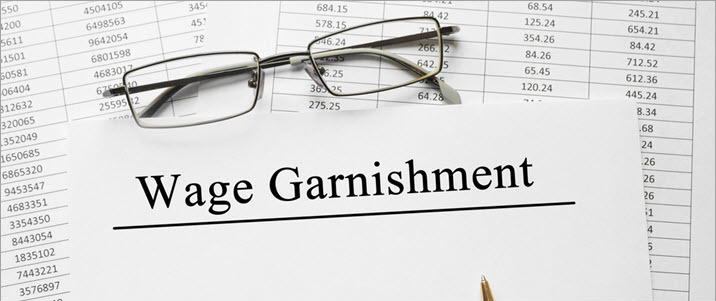9 Best Practices for Processing Wage Garnishments
Part of a series | Wage Garnishment Insights

Written in partnership with Alba Didonato, Principal Client Service & Product Support Consultant in the compliance and shared services team at ADP.
Processing wage garnishments can be a huge task. In addition to federal law, each state has its own regulations, laws, and guidelines that can apply to certain aspects of wage garnishment—and those rules can vary further by garnishment type. As an employer, you need to maintain compliance with the applicable laws and stay on top of regulatory changes, especially if you have employees in multiple locations. Falling out of compliance could make you liable for your employee's debts or obligations, plus fines and interest.
9 wage garnishment best practices
One of the best ways to stay in compliance is to follow the best practice tips listed below. These nine recommendations can help you avoid unanswered or incorrectly processed garnishment orders, which can lead to additional work for your organization, legal claims, and poor employee relations.
1. Always process wage garnishments in a timely fashion. That is, act on wage garnishment orders as soon as you receive them. Any delays could cause a chain of events that may lead to a judgment against you.
2. Follow Title III of the federal Consumer Credit Protection Act (CCPA), particularly with respect to the limited amounts an employer may withhold from an employee's earnings for certain types of garnishments. (For guidance, refer to the Department of Labor's fact sheet.) Also understand what aspects of wage garnishments are determined by state law, such as priorities of garnishments. Note: If federal and state withholding limitations differ, the CCPA provides that the employer must follow the state's laws if they result in a lower amount of earnings being garnished.
3. When responding to a wage garnishment order, fill out all answers. Garnishment orders often include interrogatories to be answered by the garnishee. They can ask for information such as debtor's employment status with you, or frequency of pay. Do not leave these fields blank. If appropriate, offer additional information to explain an employee's status (or the reason that wages are not being withheld). For example, if you have an active employee who is not earning wages, add a note that explains the situation. If possible, add the length of time the employee will remain inactive, or any other pertinent information. Armed with this information, the agency may stop sending you unnecessary follow-up letters and update requests.
4. Promptly notify the garnishing agencies, courts, creditors or appropriate third-parties when an employee with an active garnishment leaves the company. If these notifications and updates are not sent in a timely fashion, agencies will have incorrect employee status information and will continue to send you orders, expecting you to respond with payments. Also, per state and federal new hire reporting requirements, notify the appropriate state agencies when you hire new employees, including seasonal or short-term staff.
5. Keep a copy of all correspondence related to the garnishment (including court-filed notifications and responses) in your records. Several states continue to rely on hard copies (paper documents), mailing them back and forth with employers. If that mail gets lost, the recipient will be looking for missing answers. Keeping copies of correspondence can help avoid escalations for missing notifications.
6. Many state agencies have adopted digital processes, allowing you to submit and receive data electronically. Be aware of which states and agencies have this option in place, and which mandate that you use only electronic communications (such as Michigan tax levies and Illinois creditor garnishments).
7. Check the garnishment order before sending payments, as it may have specific requirements regarding when payments should be sent. Also check state laws. Each state has its own requirement as to when payment should be sent, and they can differ by garnishment type. (Note that some states issue an "order to remit payment," not to be confused with a new garnishment order.)
8. To cover the time involved in processing a wage garnishment, some states allow employers to withhold a nominal administrative fee. (Depending on the state, it can be either a per-deduction fee or a single flat fee, and there may be a monthly maximum limit allowed.) If employer administrative fees are allowed for a particular state and lien type, ensure that your system is correctly programmed based on the state requirements. Also, confirm the requirements every year, as they can change.
9. Many state child support agencies now require employers to report bonuses and other lump-sum payments before releasing the funds. Employers who are withholding child support and paying an employee a one-time lump-sum must adhere to state-specific reporting and timeline requirements. Once notified, the child support agency will provide a withholding amount and directions on releasing the lump-sum payment.
Mitigate your risk
Learn about wage garnishment solutions, integrated with your existing payroll systems, that can help you increase accuracy, reduce risk, and improve compliance.



